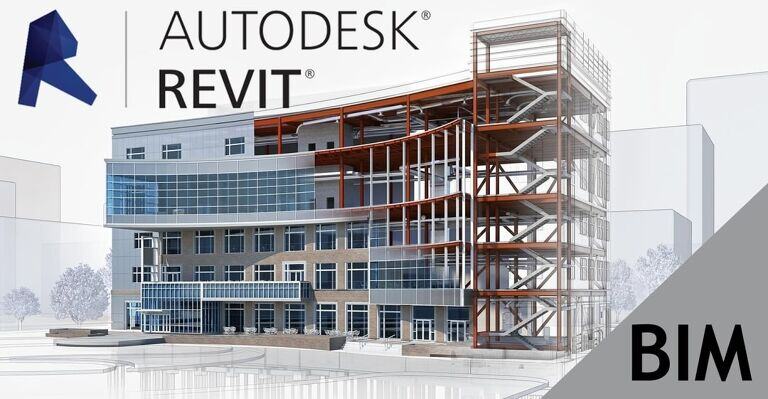Architecture Education Is Getting More Expensive : What Should You Do Next?

Table of Contents
There has been a steady increase of at least 20% in the fees structure of architecture education globally, through 5-yearly intervals between 2000, 2005 and 2010, according to a survey by ZAP Architecture. This has students questioning the scope of architecture. In countries with a high student debt ratio, such as the United States, this has also translated into large amounts of student debt that goes on for decades after graduation.
Why does an architecture education cost so much, though? In this article, we’re going to dive into the reasons for this, and explore how you can qualify for high paying jobs with an architecture degree without forcibly opting for a Master’s.
Why is Architecture Education So Expensive?
Time, Fees and Expenses
A major and fairly obvious reason for the high cost of architecture education is the length of time it takes to finish the degree. Architecture school goes on for 5 years. If a Master’s degree is pursued after that, it takes an additional 2 years. This amounts to a total of 7-8 years for a Bachelor’s + Master’s. An architecture bachelor’s degree is longer than the 3 years for most other bachelor’s courses. This also makes a B. Arch. degree more expensive, due to the additional 2 years.
Average Cost of Bachelor’s Tuition in Architecture
The data from the tables below has been identified from the top ten public and private design universities in each of these regions. The fees are drawn on the basis of official tuition for the year 2022.
|
Public Universities |
Private Universities |
|
|
India |
INR 2,00,000- INR 5,00,000/per year. |
Beginning at INR 15,000,00 up to INR 30,000,00/ per year |
|
UK |
INR 16,49,666- INR 38,88,910 |
INR 15,67,000- INR 32,34,000 |
|
USA ** |
INR 50,04,000-INR 65,85,800/ per year |
INR 50,04,000- INR 65, 85,800/per year |
|
Europe * Netherlands |
Dependant on the country* INR 9,08,943- INR 13,38,200/ per year |
Dependant on the country* INR 10,05,300- INR 16,30,567/ per year |
|
UAE ** |
INR 9,18,000- INR 20,18,721 |
INR 9,18,000- INR 27,18,721 |
* Europe has a number of different policies and price ranges. In Germany, public universities offer free education for domestic and international students. Norway is similar.
** These are prices for international students.
Average Cost of Master’s Tuition in Architecture
|
Public Universities |
Private Universities |
|
|
India |
INR 23,000-INR 85,000 /per year |
INR 1,60,000- INR 3,25,000- per year |
|
USA |
INR 16,65,669- INR 30,86,000/ per year |
INR 43,70,989- INR 49,48,560/ per year |
|
UK |
INR 14,000,00- INR 47,000,00/ per year |
INR 21,000,00- INR 47,000,00 - per year |
|
Europe Netherlands
|
Dependant on the country* INR 16,34,929- INR 27,62,990 per year
|
INR 1,34,829- INR 27,62,990 per year
|
|
Middle East |
INR 11,05,500- INR 23,83,000- per year |
INR 11,05,500- INR 23,83,000- per year |
*Denmark, Austria, Norway and Germany have very subsidised education for local as well as international students.
Note that none of the above figures reflect living costs, they are simply tuition fees. In addition to this consider the intricate tools required to complete an architecture education. You need well-functioning computers, software, printing materials, essential travel expenses and survival costs.
What Problems Arise After an Expensive Architecture Degree?
Outdated Courses, Understaffed Colleges
Another complaint that is being raised in the industry with alarming frequency is the gap between technical skills required on the job, and the syllabus of architecture colleges, which continues to remain outdated. The knowledge of software such as Revit, ArchiCAD and Fusion360 have quickly become the need of the hour in an increasingly digitised profession.
However, most universities do not teach students how to operate these software. Furthermore, due to the rapid boom in tech adoption, there is a severe shortage of experienced faculty to teach these new skills. In India, the Council of Architecture’s recommended syllabus for undergraduate students shows only one subject in ten semesters that focuses on Computer Applications.
This means that in order to keep in pace with the industry’s demands, students have to find ways to learn these skills outside of the classroom environment: by hook or by crook. These resources are not available to them within the university ecosystem.
Salaries and Return on Investment
Comparable professions that take as much time as an architecture degree are the medical field, where an undergraduate degree lasts 5 and a half years, and law, which also lasts 5 years. However, what is the return on investment, or salary structure and benefits that students finally receive?

Salaries
In India, fresh architecture graduates earn INR 2.5 lakh per year, on average. Comparatively, fresh MBBS graduates, on average, earn INR 6,000,00. Law students, after an LLB, report salaries that range from an average of INR 3,000,00- INR 7,000,00. Moreover, architecture education poses a tough challenge to students in terms of placements. AICTE (All India Council for Technical Education) has put in place rules that encourage institutions to provide Placement Cells and employment opportunities to students.
Meanwhile, the median salary of an architect in the USA is USD 76,394/ per year. Compared to other STEM disciplines that have a long graduation tenure, such as the medical profession, doctors earn up to USD 189,000 per year on average. An education in law also lasts up to 5 years, and the entry level salary for lawyers in the US (on average) is USD 139,000/per year.
Placement Problems
However, the Council of Architecture (COA) in India has no such rules in place, and very few architecture institutions (SPA Delhi, IIT Roorkee, IIT Kharagpur, CEPT Ahmedabad) offer placements to students. In 1972, there were only 12 architecture institutes in India. Now, there are more than 465 UGC approved architecture institutions that churn out nearly 24,000 architecture graduates in India every year. However, there are not enough well-paying jobs for them to gain a good return on their investment in an architecture education.
Similarly, after pursuing a Masters degree in architecture, students typically stand to earn. If you are considering pursuing a master’s degree in architecture, it is definitely important to proceed carefully due to the reasons mentioned above.

What’s the Solution?

Currently, between the cost of tuition, in addition to the skills learned and the median salary for an early career professional- the student loses their enthusiasm for learning. They are disenchanted by the outdated syllabus, and frustrated with their qualifications.
The 2020 Covid-19 pandemic led to a series of unexpected events to take off. While online learning did exist in the past, it was thought of as a poor substitute for offline learning. People had reservations about the effectiveness of this learning method. The pandemic forced many institutions to take note of the new circumstances, and amp up their services. Architecture universities began to conduct classes online, but what followed was also a boom in upskilling services. In fact, even the World Economic Forum has cited online learning as an important tool for closing the widening global skills gap.
Online learning has begun to solve a crucial problem in the AEC industry. There was a gap between the skills students were expected to know when entering the professional AEC industry, and the skills they were taught in architecture schools. However, the professional world requires students to be proficient in computer software, and manual drafting serves no advantages anymore.
Benefits of Online Learning
The demands of the AEC industry are changing. As discussed in the reasons previously given, architecture education in India and several other countries is not in keeping with industry demands. There is a severe shortage of trained staff in new software and other in-demand skills.
- There are several advantages to online learning. The first is the idea of flexible learning. Online education usually allows students to engage in learning at their own pace, and cope with the hectic pressures of full-time jobs. In addition, due to the rising price of most professional architecture degrees, and their low return on investment, many MOOCs (Massive Online Open Courses) began to emerge.
- Secondly, online learning offers a vast variety of price ranges that students can choose from. Online learning is also usually short-term and does not require an extensive amount of time to pick up a skillset, as opposed to a Master’s degree, which would require at least 1 year.
- Online learning, most importantly, allows students and professionals to upskill. As discussed earlier, the current syllabus of architecture schools on the undergraduate level, do not have much of an emphasis on computer aided software. However, it is increasingly becoming the industry standard. It has been predicted that by 2026, 89 per cent of architecture firms globally will be using new, digitised workflows such as BIM (Building Information Modelling).
There is currently a huge demand in the market for BIM professionals due to the many advantages of BIM over traditional Computer Aided Software.
In an article detailing their hiring process (ArchDaily), Zaha Hadid Architects revealed that they prioritise work experience, design approach, software skills and portfolio presentation much more than degrees. In fact, they have a round in their hiring process dedicated to testing applicants for BIM and Revit skills over a written test. Large numbers of firms globally have started testing applicants for BIM skills, as the process is being picked up for more efficient functioning all over the world.
It has also been noted that on average, upskilling in vocations such as BIM opens doors financially as well. BIM designers, coordinators and managers stand to make nearly 40 % more than their counterparts who work in regular architecture jobs.
Conclusion
Traditional learning avenues in architecture are expensive. To enhance their career profile as an architect, students are often pushed to acquire a Master’s degree. However, they find themselves stuck in old frameworks where their salary expectations are not met.
In these trying circumstances, online programs function as an oasis. There are many online programs for architects that teach skills heavily in demand in the AEC industry. Skills in software such as Revit, and the larger workflow of BIM is quickly becoming the ‘new normal’ in architecture. They also offer a host of benefits- including flexible learning, a variety of price ranges and placement assistance.
To get more information and training in BIM, along with the most in-demand AEC skills, head over to Novatr’s BIM Professional Course. Go to our Resources page if you want to get more insights on BIM, AEC careers, software, tools and industry trends.

 Thanks for connecting!
Thanks for connecting!


.png)

.jpg)



.jpg)
-1.png)

